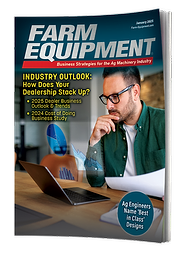The current downcycle will test dealer leaders, particularly newer untested leaders and managers, who must also deal with the turbulence and uncertainty of new technologies, generational changes, and the economy.
Like a pilot navigating stormy weather, the best dealer leaders elevate their perspective to find calmer air and work their controls to maintain stability, especially at critical times like landing or takeoff. The dealer leader as pilot analogy frames up the leadership mindset required to guide organizations through uncertainty. We will explore lessons of stability and adaptability at the top that will help dealerships not only survive but also thrive in these challenging times.
Stability: The Foundation of Leadership Starts at the Top
Stability within an organization begins with its leadership. Just as passengers look to the pilot for reassurance during turbulence, employees look to their leaders for guidance and confidence. A leader’s calm demeanor and clear vision can instill a sense of security and purpose throughout the organization. This top-down ‘theater of leadership’ approach ensures that a sense of security permeates every company level.
Discipline: Expense Control and Efficient Processes
Financial discipline becomes paramount in turbulent times. Leaders must implement stringent expense control and optimize processes to do more with less. They must scrutinize every expenditure and find ways to streamline operations without compromising quality. By implementing efficient processes, leaders can reduce waste, lower costs, and improve overall productivity. This disciplined approach stabilizes the organization and positions it for long-term success.
Customer-Centric Focus
A customer-centric approach is crucial for maintaining stability.
When leaders prioritize the needs and satisfaction of their customers, they build loyalty and trust. This, in turn, creates a stable revenue stream and a solid customer base. By taking care of the customer, leaders ensure that the customer will take care of the dealership. This symbiotic relationship fosters a culture of mutual respect and reliability.
Leader → Culture → Company → Customer
The influence of a leader extends beyond their immediate actions. A leader’s values and behaviors shape the organizational culture, affecting the company's performance and customer satisfaction.
When intentionally building a culture of stability, discipline, and customer-centricity, leaders create a positive feedback loop that benefits the entire organization and ultimately impacts the customer and their loyalty to the dealership.
Adaptability - Embracing Change and Seizing Opportunities
Embracing Changes: Resiliency
Adaptability is synonymous with resiliency. Leaders must adjust to changes swiftly and effectively, embracing change rather than resisting it. By fostering a culture of adaptability, leaders can ensure that their teams are resilient and capable of navigating uncertainty. This involves continuous learning, flexibility, and a willingness to pivot when necessary.
Seize Opportunities
Opportunities often arise during times of turbulence that can propel an organization forward. Leaders must be vigilant and proactive in identifying and seizing these opportunities. For example, selling productivity-increasing and expense-reducing technologies to your customers can provide a competitive edge to them and to your dealership.
Additionally, turbulent times may present opportunities for mergers and acquisitions. Strategic M&A can strengthen the organization’s market position and drive growth, whether buying a neighboring business or selling to them.
Balancing Stability and Adaptability
Successful leadership in turbulent times lies in balancing stability and adaptability. While stability provides a solid foundation, adaptability allows the organization to evolve and thrive. Leaders must balance maintaining core values and processes while being open to innovation and change. This dynamic approach ensures that the organization remains grounded yet agile, capable of weathering any storm.
Practical Steps for Leaders
Communicate Clearly and Consistently: Communication is essential during turbulent times. Leaders should provide regular updates, share their vision, and address any concerns. This transparency builds trust and keeps everyone aligned.
- Empower Your Team: Coach your people to take initiative and make decisions. Doing so builds a culture of adaptability. Encourage their creativity and problem-solving and provide the necessary resources and support. Recognize and reward employees who demonstrate these qualities.
- Invest in Technology: Leveraging technology can enhance productivity and reduce costs. Stay informed about the latest advancements and consider how they benefit your organization.
- Monitor Financial Health: Keep a close eye on the numbers and adjust strategies as needed.
- Implement cost-saving measures and explore new revenue streams to ensure economic stability.
- Plan for the Future: Develop contingency plans and scenario analyses to prepare for potential challenges. This proactive approach ensures that the organization is ready to adapt to any situation.
By thinking like pilots, leaders can navigate uncertainty with confidence and poise. Demonstrate stability through disciplined expense control, efficient processes, and a customer-centric focus while also adapting to seizing opportunities. By balancing these two essential qualities, leaders can guide their organizations to not only survive but thrive in turbulent times.






